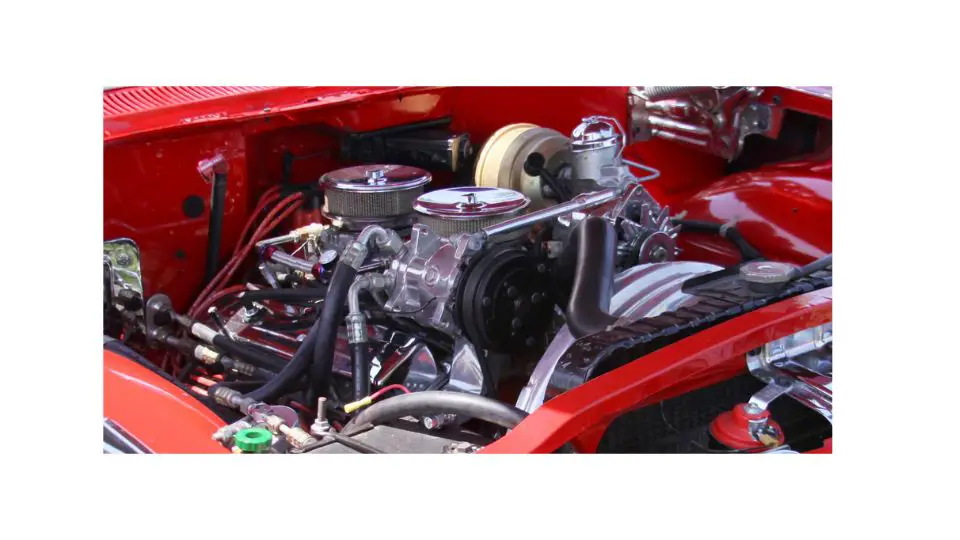305 Chevy engines are some of the most popular V8s on the road today. They can be found in everything from hot rods to pickup trucks. However, they are not without their problems.
Some common Chevy 305 problems include engine friction, insufficient airflow, valve shrouding, small bore size, peripheral system failure, design limitation, and low-end torque. Large valve heads, the engine using a flat-tappet, and an engine-powered water pump are other issues you may experience with your Chevy 305.
In this blog post, I will discuss some of the most common issues people have with 305 Chevy engines. I will also provide tips on how to fix these problems.
Common Problems with Chevy 305
Here is a detailed guide on people’s most common problems with their Chevy 305 engines.
Engine Friction
When friction occurs in the engine’s internal parts, it leads to serious damage to the engine block. Friction can cause the engine to seize up, and it can also damage the bearings.
With continued friction, the rotating parts of the engine are also subject to wear and tear. After some time, the engine will develop pitting and scoring on the cylinder walls. The valves, rings, and piston skirts will also suffer wear and tear.
If you want to prevent engine damage due to friction, you should use a good-quality oil additive. This will help to lubricate the engine’s internal parts and reduce friction. You should also change your oil regularly to prevent the build-up of engine sludge.
Insufficient Airflow
One of the main reasons for insufficient airflow is the small-bore size. The bore size is the diameter of the cylinder in the engine. If the bore size is too small, it will restrict airflow and cause the engine to run lean.
Another reason for insufficient airflow is valve shrouding. This is when the valves are not fully open, restricting airflow into the cylinders. You can install larger valves or ports and polish the cylinder heads to fix this problem.
Peripheral System Failure
Like most vehicles made in the 80s, the 305 engine is also susceptible to peripheral system failure.
The best way to solve this is to change those parts before they fail. You can do this by regularly checking the engine oil, coolant, and power steering fluid levels.
Design Limitation
The design of the Chevy 305 engine is limited by its small bore size. This limits the airflow that can enter the cylinders, reducing power and efficiency.
Another design limitation is the flat-tappet camshaft. This type of camshaft is less durable than a roller camshaft and can cause engine damage if not properly lubricated.
Low-End Torque
The chevy 305 has a small stock camshaft that leads to low-end torque. To increase low-end torque, you can install a larger camshaft or upgrade to a roller camshaft. You can also add an aftermarket intake and exhaust system to increase airflow and power.
Cold Starting Problems
Starting your engine in cold weather can be a problem with the Chevy 305. This is because the engine uses a carburetor, which can freeze in cold weather.
To fix this problem, you can install an electric choke on the carburetor. This will keep the carburetor from freezing and make it easier to start your engine in cold weather.
Large Valve Heads
Another common problem with the Chevy 305 is large valve heads. This can cause valve shrouding that, in turn, limits airflow into the cylinders.
To fix this problem, install a larger exhaust valve or port and polish the cylinder heads. The larger exhaust valve will eliminate valve shrouding.
The Engine Uses a Flat-Tappet
The flat tappets are more mechanical and cause more friction between the engine’s moving parts. This can lead to engine damage over time.
To fix this problem, install hydraulic roller cams and lifters. This will reduce friction and prevent engine damage.
How To Prevent Common Chevy 305 Problems
To prevent common Chevy 305 problems, you should check and maintain the following parts:
- Coolant
- Differential fluid.
- Engine oil.
- Grease fittings.
- Fuel filters and spark plugs.
- Caps and rotors.
- Batteries
Conclusion
The Chevy 305 is a reliable engine, but it does have some common problems. These problems can be fixed with the right parts and regular maintenance.
If you take care of your engine, it will take care of you. Regular oil changes, tune-ups, and other preventive maintenance will help to keep your engine running smoothly for years to come. Thanks for reading. I hope this article was helpful.

Tomas is a retired Chevy Auto Technician that brings decades of hands-on experience and expertise to the table. He’s also a father to two incredible daughters. He enjoys using his knowledge and experience to help you solve and find reliable information on Chevrolet vehicles. Whether it’s troubleshooting engine problems or providing tips for maintenance, Thomas is committed to helping Chevy owners keep their vehicles running smoothly and safely.




